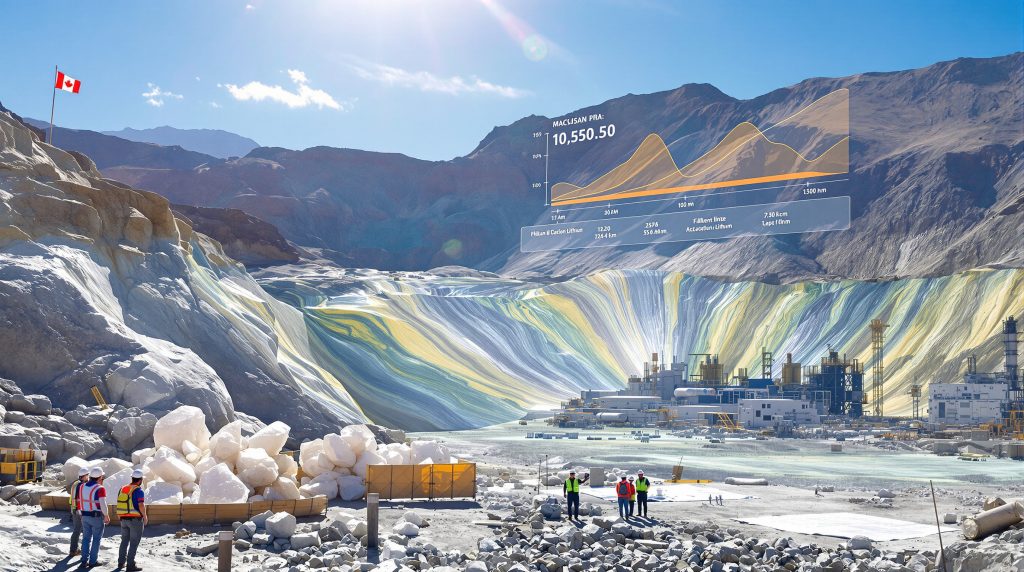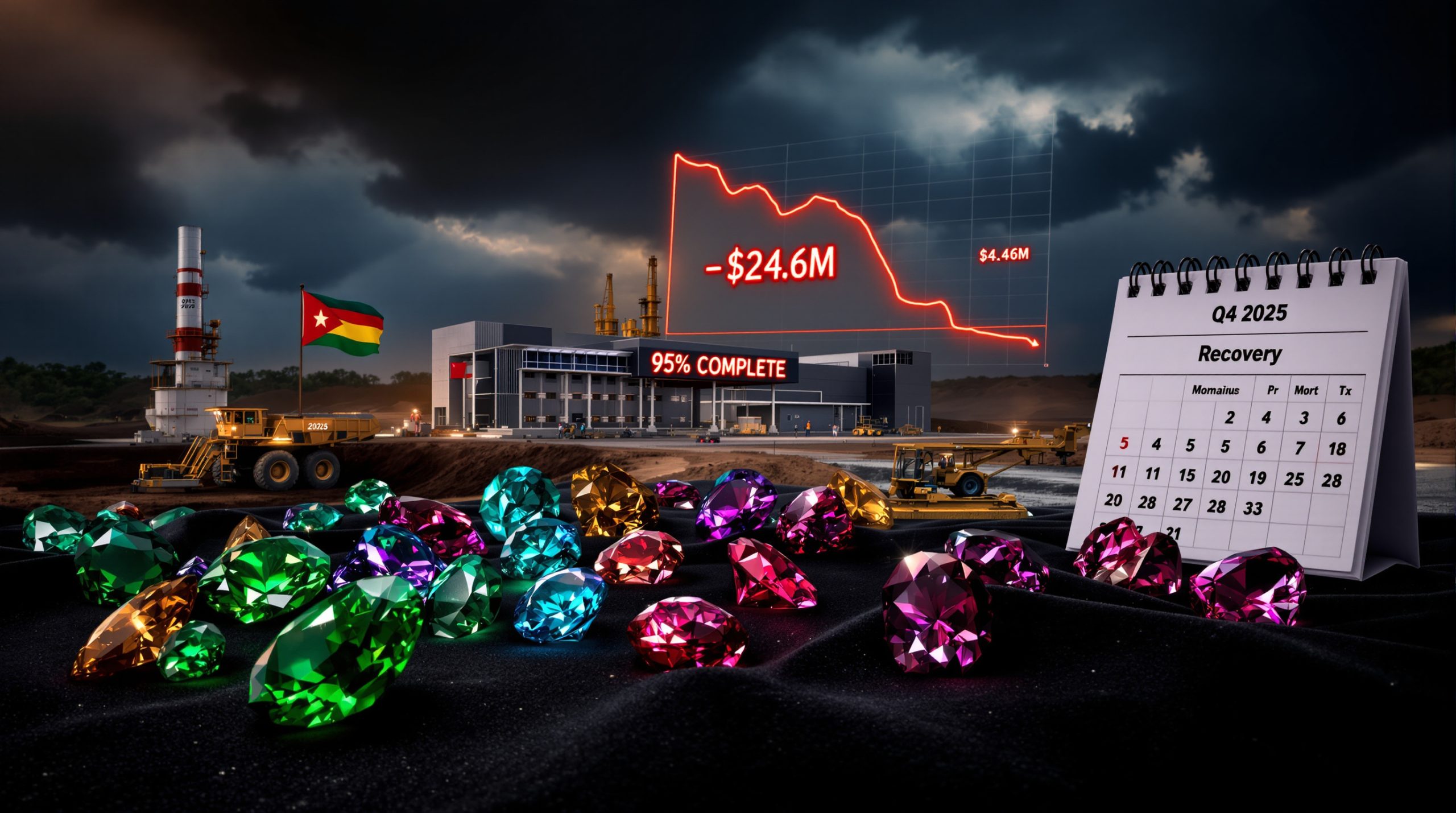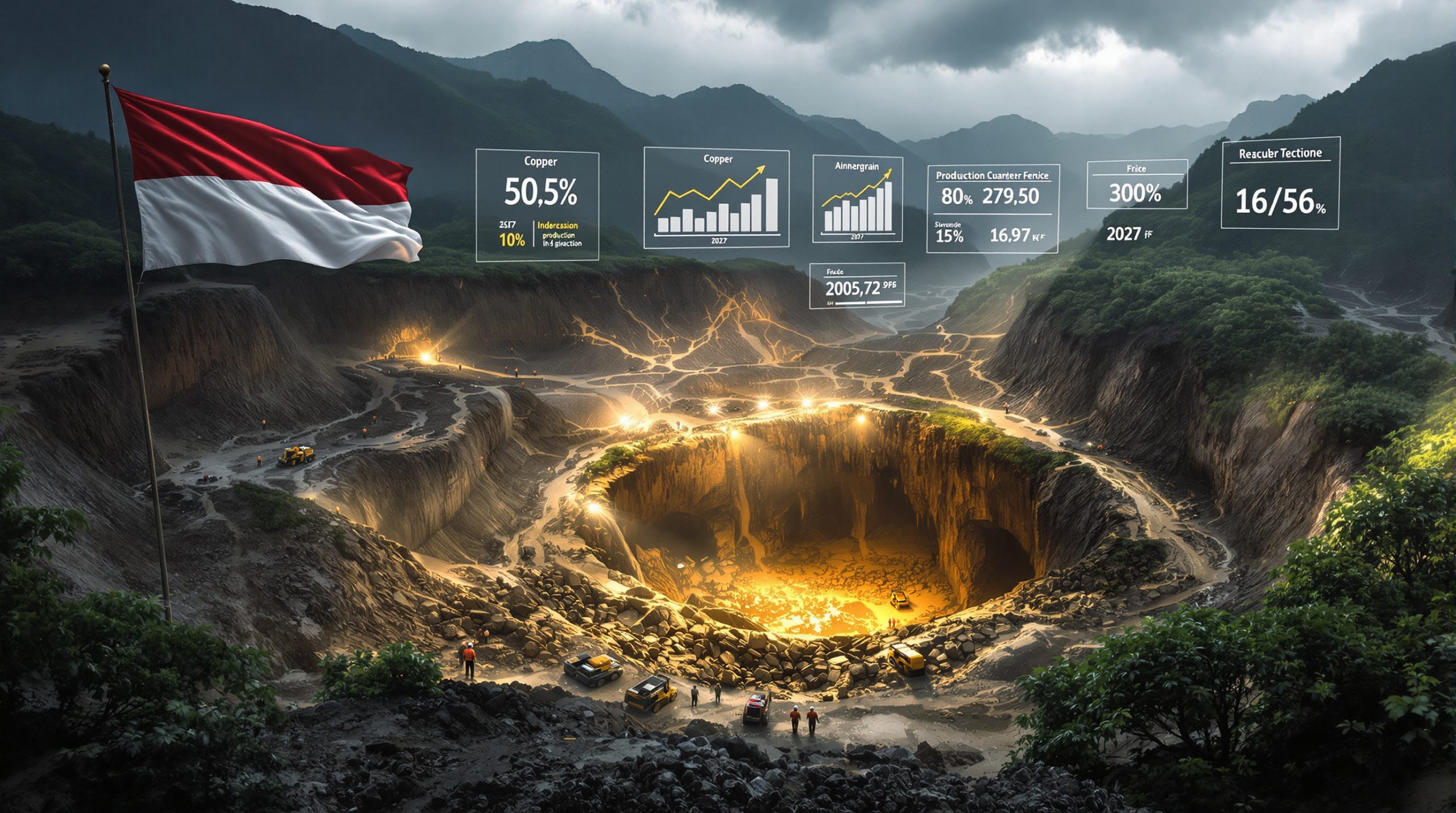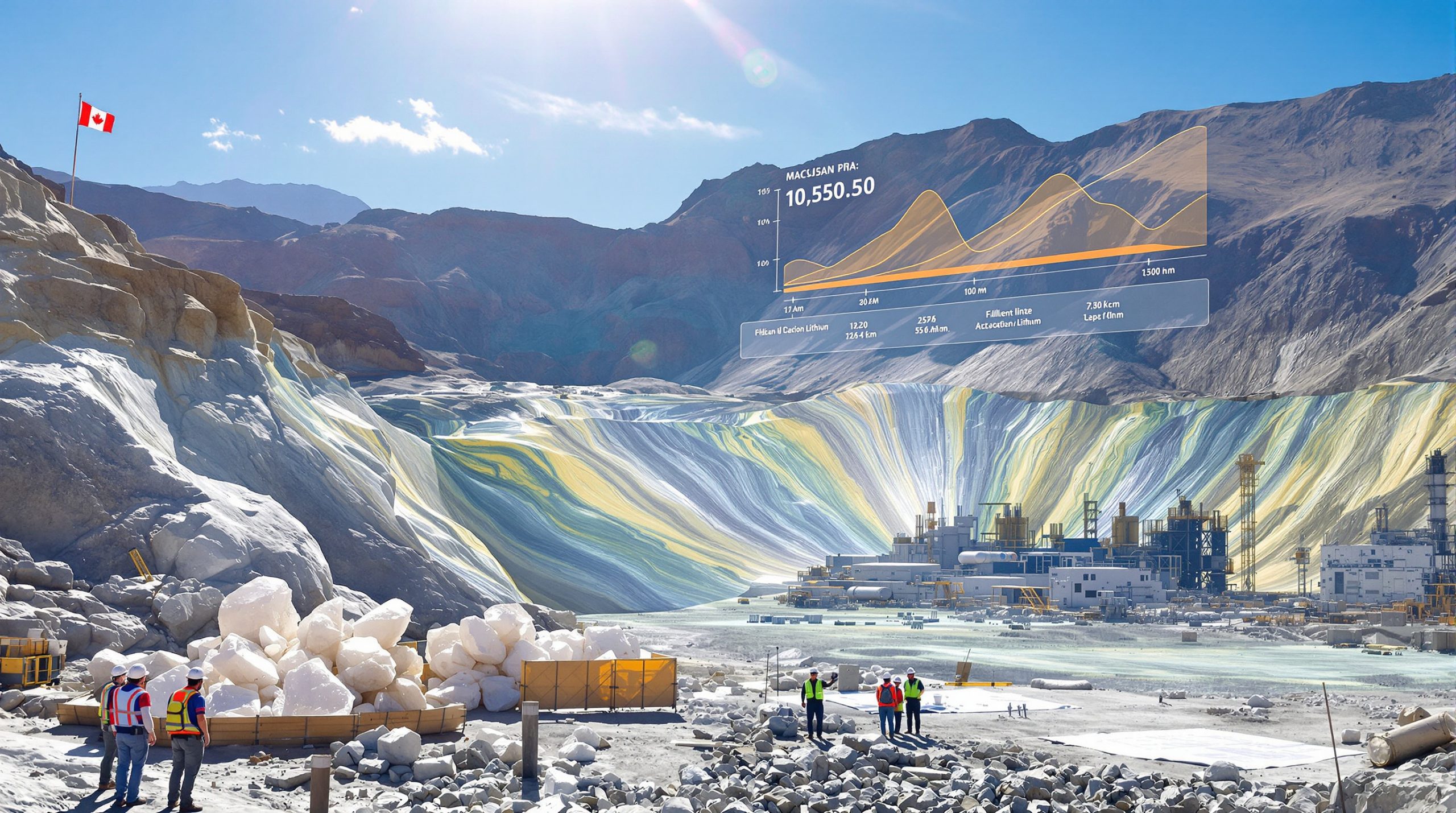Understanding American Lithium's Falchani Project Investment
The global race for lithium resources has intensified as demand for electric vehicle batteries and energy storage solutions continues to grow. Among the most promising lithium developments worldwide is the Falchani project in Peru, where Canadian company American Lithium has recently increased its investment commitment significantly. This strategic move positions the project as a potential cornerstone in the global lithium supply chain, particularly as Australian lithium tax innovations continue to reshape the competitive landscape.
What is the Falchani Lithium Project?
The Falchani project represents one of the world's largest hard rock lithium deposits, located in Peru's Puno region on the Macusani Plateau in Carabaya province. This significant resource ranks as the sixth-largest hard rock lithium deposit globally, covering 32 mining concessions across the high-altitude Andean region.
The project is being developed by American Lithium through its Peruvian subsidiary, Macusani Yellowcake. Unlike brine-based lithium operations common in South America with notable Argentina lithium insights showing different extraction methods, Falchani's hard rock classification makes it a different type of lithium source with unique extraction and processing requirements.
The geological formation contains a substantial lithium resource that positions Peru to become a significant player in the global lithium market, potentially joining major producers like Australia, Chile, and Argentina as the demand for battery materials continues to accelerate worldwide.
How Much is American Lithium Investing in Falchani?
American Lithium has recently increased its investment commitment to $847 million, representing a significant 22% boost from previous estimates. This expanded capital allocation follows a favorable Peruvian Supreme Court ruling that resolved a critical legal dispute over mining concessions.
The original base case capital cost was projected at $1.97 billion over the mine's lifetime, according to the preliminary economic assessment (PEA) completed in 2020. The current $847 million investment represents the initial development phase, with additional capital to be deployed as the project progresses toward full production capacity.
This substantial financial commitment reflects American Lithium's confidence in both the project's potential and the improving regulatory environment in Peru. The investment scale places Falchani among the major lithium development projects globally and represents one of the largest mining investments in Peru's recent history.
What Legal Challenges Did the Project Overcome?
The Peruvian Supreme Court unanimously ruled in favor of Macusani Yellowcake, American Lithium's subsidiary, in a dispute concerning 32 mining concessions. This landmark decision represented a critical turning point for the project's advancement.
The court rejected claims from both INGEMMET (Peru's Geological, Mining and Metallurgical Institute) and MINEM (Ministry of Energy and Mines) regarding concession ownership. The legal dispute had created uncertainty around the project's future, temporarily constraining American Lithium's ability to advance development activities.
With this definitive ruling, the company has secured clear title to the mining concessions, removing what had been the most significant obstacle to the project's development. The unanimous nature of the court's decision provides additional confidence that future legal challenges are unlikely to threaten the project's advancement.
What Will the New Investment Fund?
The additional investment will primarily support the construction of an on-site refinery in the Puno region. This strategic addition to the project scope will enable the company to produce battery-grade lithium carbonate directly at the source, enhancing the project's economic value and reducing logistical complexities.
Building refining capacity directly at the mine site represents a significant vertical integration strategy that differentiates Falchani from many lithium projects that export raw materials for processing elsewhere. This approach offers several advantages:
- Reduced transportation costs for raw materials
- Higher value-added exports from Peru
- Increased employment opportunities in the processing facility
- Greater technology transfer to the local economy
- Potentially lower overall environmental footprint by eliminating shipping of raw materials
The refinery will incorporate advanced processing technologies designed specifically for the unique mineralogical characteristics of the Falchani deposit, ensuring optimal lithium recovery and product quality. This focus on battery-grade refinery development is becoming increasingly important in global lithium supply chains.
What is the Project Timeline?
With the increased investment and legal hurdles cleared, American Lithium has established a new timeline for the Falchani project:
- Construction is scheduled to begin in 2027
- Battery-grade lithium carbonate production is expected to commence after 2028
- The company is currently engaging with potential investors from Peru and internationally, including German partners
Peru's mining minister is scheduled to meet with company shareholders on October 7, 2025, indicating high-level government engagement with the project. This timeline places Falchani's production start after several other major lithium projects worldwide but still within the period when lithium demand is projected to continue growing substantially due to electric vehicle adoption and energy storage deployment.
The multi-year development schedule reflects the complexity of building both mining operations and processing facilities at a remote high-altitude location, as well as the rigorous permitting and approval processes required.
What is the Production Potential?
According to the preliminary economic assessment (PEA) completed in March 2020:
- Annual production capacity: 63,000 tonnes of lithium concentrate
- Project lifespan: 33 years of continuous production
- Original base case capital cost estimate: $1.97 billion over the mine's lifetime
This production capacity would place Falchani among the world's significant lithium operations, providing a steady supply of material for decades. The 33-year projected lifespan is particularly notable, as it provides exceptional long-term supply security for potential offtake partners and investors.
The substantial production capacity aligns with forecasts of continued lithium demand growth through the 2030s and beyond, as electric vehicle adoption accelerates globally and renewable energy storage requirements increase. The long production timeline also allows American Lithium to potentially expand capacity over time as market conditions warrant.
How Does This Project Compare to Other Lithium Developments?
The Falchani project stands out in the global lithium landscape due to several factors:
- Scale: As the sixth-largest hard rock lithium deposit worldwide, it represents a significant resource
- Location: Peru offers strategic positioning for supplying both North American and European markets
- Vertical integration: The planned on-site refinery will enable complete processing from ore to battery-grade material
- Long-term production: The 33+ year lifespan provides exceptional resource security
Unlike many lithium projects that focus solely on extraction, Falchani's integrated approach with on-site refining represents a more comprehensive development model. This approach aligns with growing demands from battery manufacturers and automakers for more localized and controlled supply chains.
When compared to Australian hard rock operations, Falchani benefits from lower expected operating costs but faces higher initial capital requirements for infrastructure development in its remote location. Compared to South American brine operations, Falchani offers more consistent production potential without the seasonal variations that affect evaporation-based extraction methods. Furthermore, emerging technologies like geothermal lithium extraction represent alternatives to both traditional methods.
What Government Support is the Project Receiving?
The Peruvian government has demonstrated support for the project through:
- Granting additional exploration rights to American Lithium in 2023
- Scheduling high-level engagement, with Peru's mining minister planning to meet with company shareholders on October 7, 2025
- Providing legal clarity through the Supreme Court ruling on concession ownership
This governmental support reflects Peru's broader strategy to develop its critical mineral resources and diversify its mining industry beyond traditional copper and precious metals production. The country recognizes the strategic importance of lithium for the global energy transition and aims to position itself as a key supplier in this growing market.
The favorable court ruling particularly signals that Peru's judicial system recognizes the importance of providing security for foreign investment in the mining sector, which could have positive implications for other resource development projects in the country.
What Economic Impact Will the Project Have?
While specific economic impact figures weren't detailed in the available information, lithium projects of this scale typically generate:
- Significant local employment during both construction and operational phases
- Tax revenue for local and national governments
- Infrastructure development that benefits surrounding communities
- Technology transfer and skills development in the region
The construction of an on-site refinery particularly enhances the project's economic impact by creating higher-skilled technical positions and increasing the value added within Peru before export. This vertical integration approach aligns with Peru's interest in moving beyond being simply a raw material supplier to capturing more of the value chain within its borders.
For the Puno region specifically, which has historically had limited large-scale industrial development, the project represents a significant opportunity for economic diversification and skills development in an emerging high-technology sector.
What Challenges Remain for the Project?
Despite the favorable court ruling and increased investment, several challenges remain:
- Financing: Securing complete financing for the $847 million investment in a volatile commodity market
- Regulatory approvals: Navigating Peru's complex permitting processes for both mining and processing
- Technical execution: Developing refinery operations optimized for Falchani's specific mineral composition
- Community relations: Establishing and maintaining social license to operate in the region
- Market dynamics: Addressing potential lithium price volatility and evolving battery chemistry trends
The high-altitude location also presents logistical and operational challenges that will require specialized engineering solutions. Additionally, water management in the Andean region requires careful planning to minimize environmental impacts and potential conflicts with agricultural users.
American Lithium will need to navigate these challenges while also monitoring the rapidly evolving lithium market, where new extraction technologies and alternative battery chemistries could potentially impact long-term demand patterns. The success of this project will depend significantly on how well the company adapts to the ongoing mining industry evolution occurring globally.
How Does This Project Fit into the Global Lithium Supply Chain?
The Falchani project represents a significant addition to global lithium supply at a time when demand continues to grow due to:
- Expanding electric vehicle production worldwide
- Increasing energy storage system deployments
- Government policies promoting electrification and decarbonization
- Supply chain security concerns driving diversification of lithium sources
With major automakers and battery manufacturers seeking to secure long-term lithium supply, projects like Falchani that offer substantial production over multiple decades become strategically important. The project's location in Peru also adds geographic diversification to a market currently dominated by Australian, Chilean, and Argentine production.
The on-site refining capability aligns with growing industry preferences for more localized processing to reduce supply chain complexity and transportation-related carbon emissions. This feature could make Falchani's output particularly attractive to manufacturers with stringent ESG requirements for their raw material inputs.
Frequently Asked Questions About the Falchani Project
What makes the Falchani project economically viable?
The project's economic viability stems from its massive resource size, favorable mineralogy, strategic location, and the company's plans for vertical integration with on-site refining capabilities. The 33-year mine life ensures long-term production stability, while the recent legal victory provides security of tenure for the mining concessions.
The ability to produce battery-grade lithium carbonate directly at the site enhances the project economics by capturing more of the value chain and reducing logistics costs. Additionally, as battery manufacturers increasingly focus on securing stable, long-term supply agreements, Falchani's multi-decade production potential becomes particularly valuable.
How will this project impact local communities?
While specific community impact plans weren't detailed in the available information, responsible lithium projects typically include:
- Local employment initiatives with skills development programs
- Infrastructure improvements benefiting surrounding communities
- Education and training partnerships with regional institutions
- Environmental protection measures with community monitoring involvement
- Community development funds tied to production outcomes
American Lithium's engagement with Peruvian investors suggests a commitment to local participation in the project, which often translates to greater community benefits. The company will likely develop comprehensive social impact management plans as part of the permitting and approval process.
What environmental considerations are being addressed?
The development of an on-site refinery indicates attention to reducing transportation emissions and environmental footprint. Modern lithium projects increasingly focus on:
- Water conservation and recycling technologies
- Minimizing chemical usage in processing
- Comprehensive waste management systems
- Rehabilitation planning from early development stages
- Energy efficiency and potential renewable energy integration
For hard rock lithium operations like Falchani, water management is particularly important, and the company will likely implement sophisticated water recycling systems to minimize freshwater requirements and prevent potential impacts on local watersheds.
How does the investment in Falchani compare to other lithium projects globally?
The $847 million investment represents a significant capital commitment in the lithium sector, reflecting the project's scale and strategic importance. For context:
- Similar-sized Australian hard rock projects typically require $400-700 million in initial capital
- Brine operations in South America can range from $500 million to over $1 billion
- Integrated mining and chemical processing facilities generally require higher investments
Falchani's combination of resource size, vertical integration, and infrastructure development needs places it among the higher-investment lithium projects globally, but the long production lifetime and significant resource size provide a strong foundation for return on that investment. The company has also published detailed economic analysis of the project's potential returns.
Investment Implications
The American Lithium Falchani project investment represents a significant opportunity in the lithium sector with several distinctive characteristics investors should consider:
- Long-term horizon: With construction beginning in 2027 and production after 2028, this is not a near-term production story
- Scale advantage: The sixth-largest hard rock lithium resource globally provides decades of production potential
- Vertical integration: On-site refining capability enhances value capture and product marketability
- Jurisdictional considerations: Peru's mining framework balances established regulations with emerging critical minerals policies
For investors with a long-term perspective on the energy transition, Falchani represents exposure to a significant lithium resource with substantial production potential well into the 2060s, spanning multiple technology cycles in the battery and electric vehicle industries.
Disclaimer: This article contains forward-looking information regarding project timelines, production estimates, and market developments. Actual outcomes may differ materially from these projections due to technical challenges, regulatory changes, market conditions, or other factors beyond American Lithium's control. Investors should conduct their own due diligence before making investment decisions.
Seeking to Invest in the Next Major Lithium Discovery?
Discovery Alert's proprietary Discovery IQ model provides real-time alerts on significant ASX mineral discoveries, helping investors identify actionable opportunities before the broader market. Explore historic examples of exceptional returns from major discoveries at https://discoveryalert.com.au/discoveries/ and position yourself for success in the resources sector.




